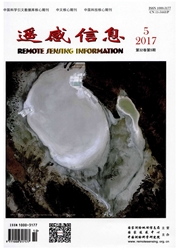

 中文摘要:
中文摘要:
利用分层分类法,通过对鄱阳湖典型湿地(蚌湖与赣江中支口三角洲)长序列秋季Landsat-TM影像进行解译分析,探讨了1991年-2008年间鄱阳湖典型湿地动态变化特征。结果表明分层分类方法能够有效地应用于Landsat-TM遥感影像的解译;从1991年到2008年蚌湖和赣江中支口三角洲湿地的植被面积分别增加18.56km2和6.01km2,其中赣江主支三角洲洲滩植被分布呈向湖体扩展态势。植被分布受水情影响比较大,蚌湖湿地的苔草面积与同时期水面积呈负相关性,而赣江主支三角洲湿地植被类型结构变化受水位影响也比较明显,苔草面积变化与秋季湖口水位表现为负相关,芦苇分布面积变化则与湖口水位变化趋势较为一致。
 英文摘要:
英文摘要:
The wetland of Poyang Lake is an internationally important wetland that can regulate and store the flood of the Yangtse River and protect the migratory birds,etc.In this paper,the dynamic monitoring on evolution of the typical wetlands(Banghu wetland and Ganjiang middle-branch delta wetland) in the Poyang Lake was carried out through the interpretation of remote sensing image during the year from 1991 to 2008.The results show that the vegetation areas of the Banghu wetland and the Ganjiang delta have increased by 18.56 km2 and 6.01km2,respectively.Furthermore the Ganjiang delta has expanded forward the main water body of the Poyang Lake obviously.The distributions of wetland vegetation were sensitive to the variation of the water level.The variation of Carex beach area of the Banghu wetland negatively correlated with that of water level in Hukou station;whereas the variation of Bulrush beach in Ganjiang middle-branch delta accorded with that of water level in Hukou station,while the reverse was Carex.
 同期刊论文项目
同期刊论文项目
 同项目期刊论文
同项目期刊论文
 期刊信息
期刊信息
